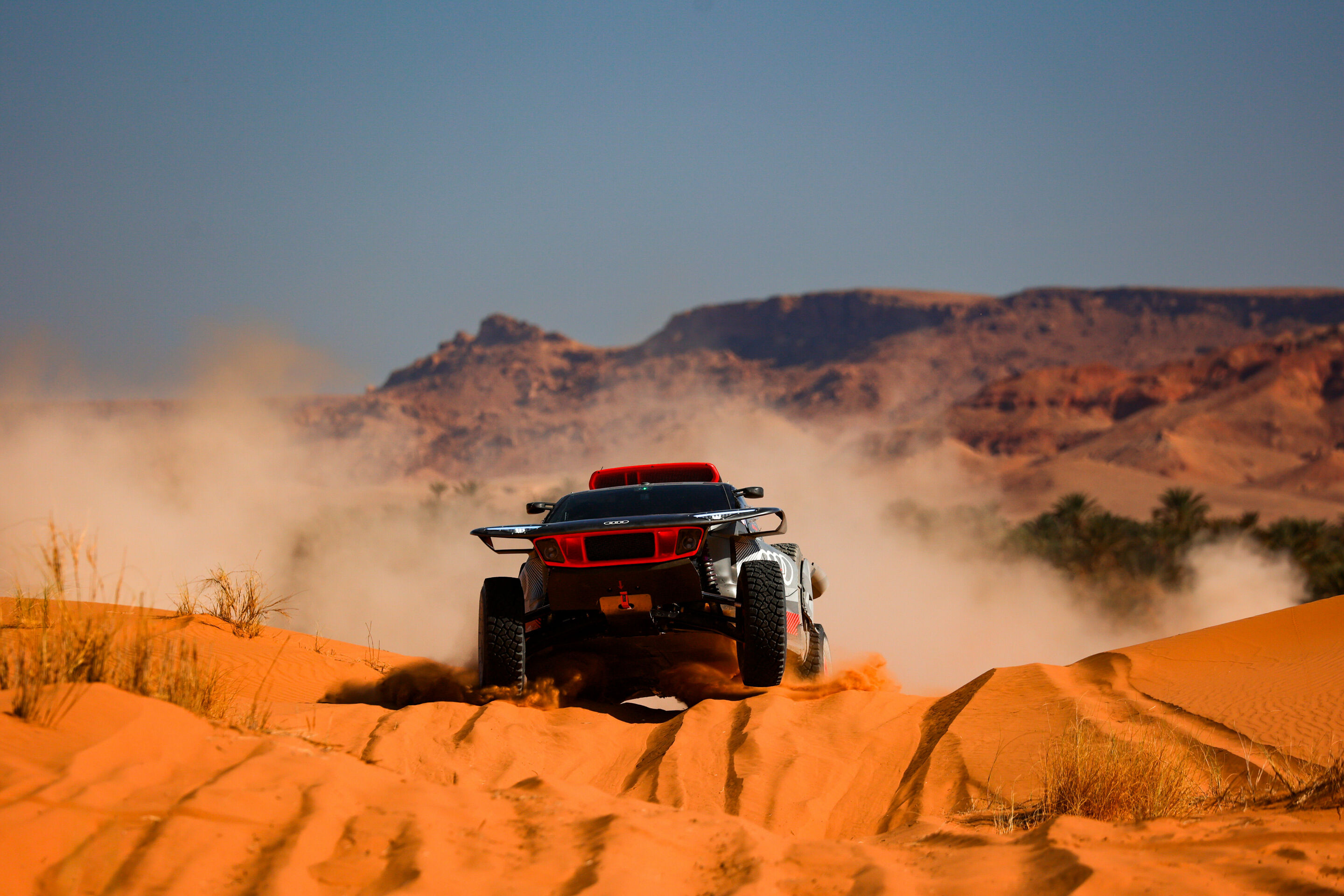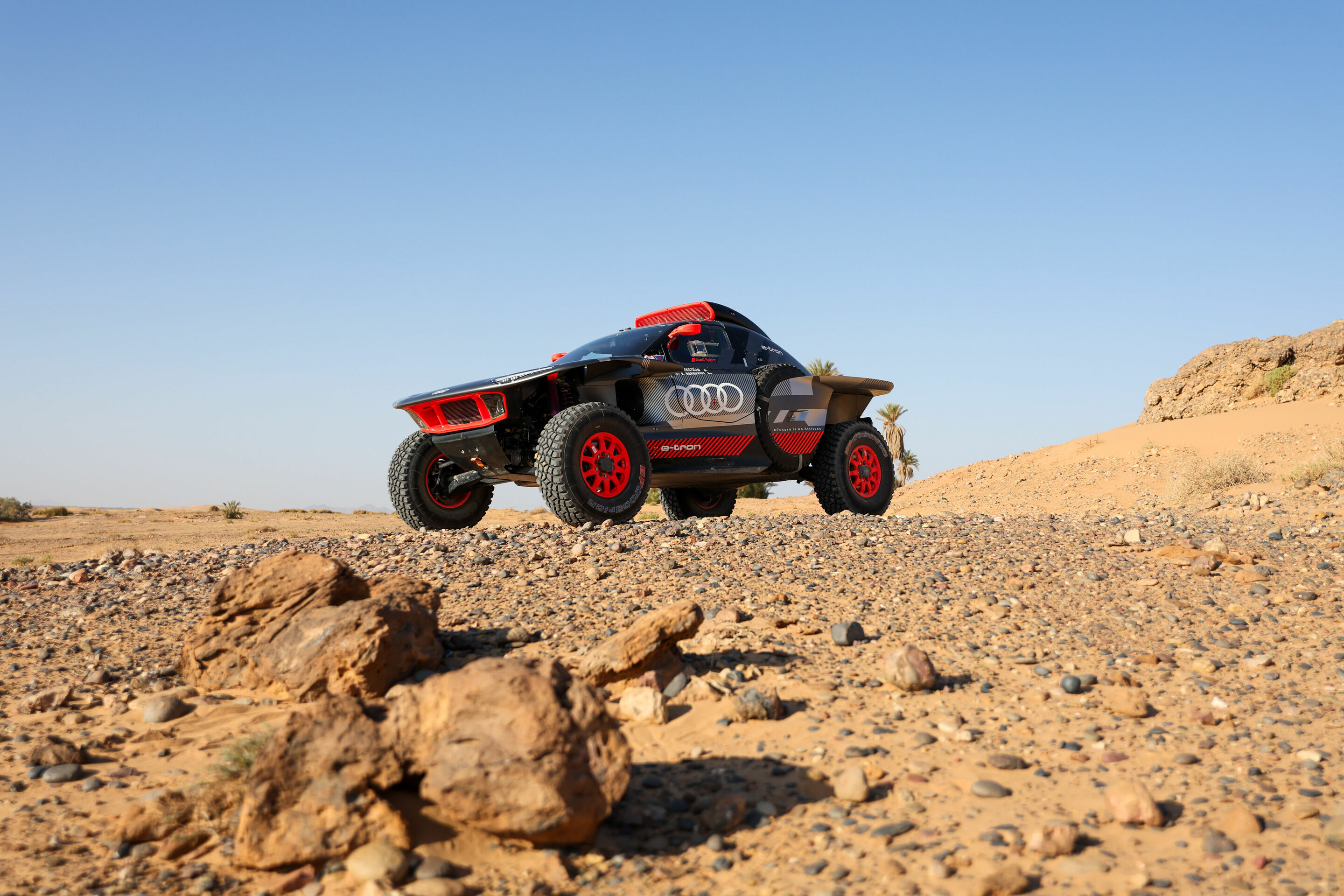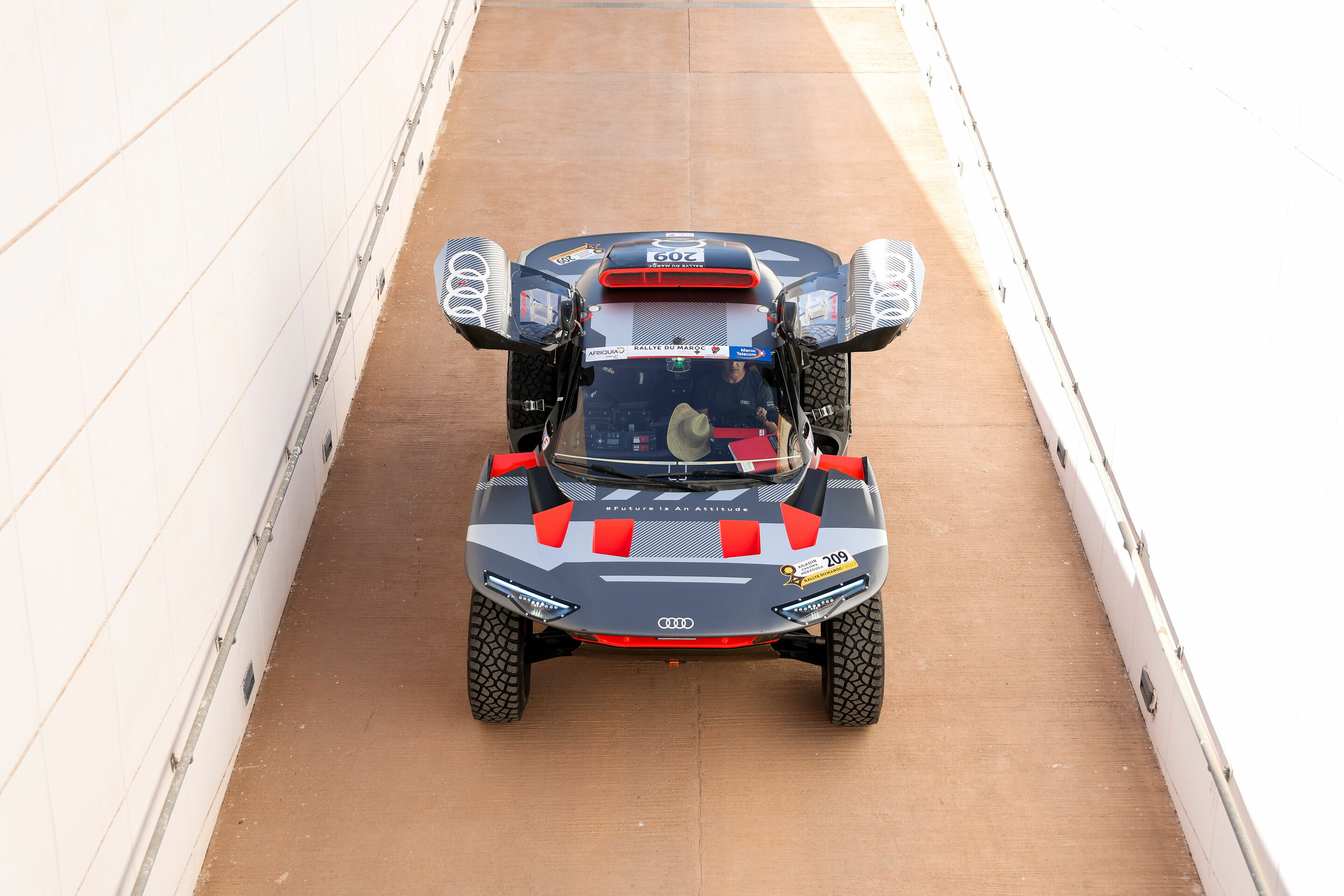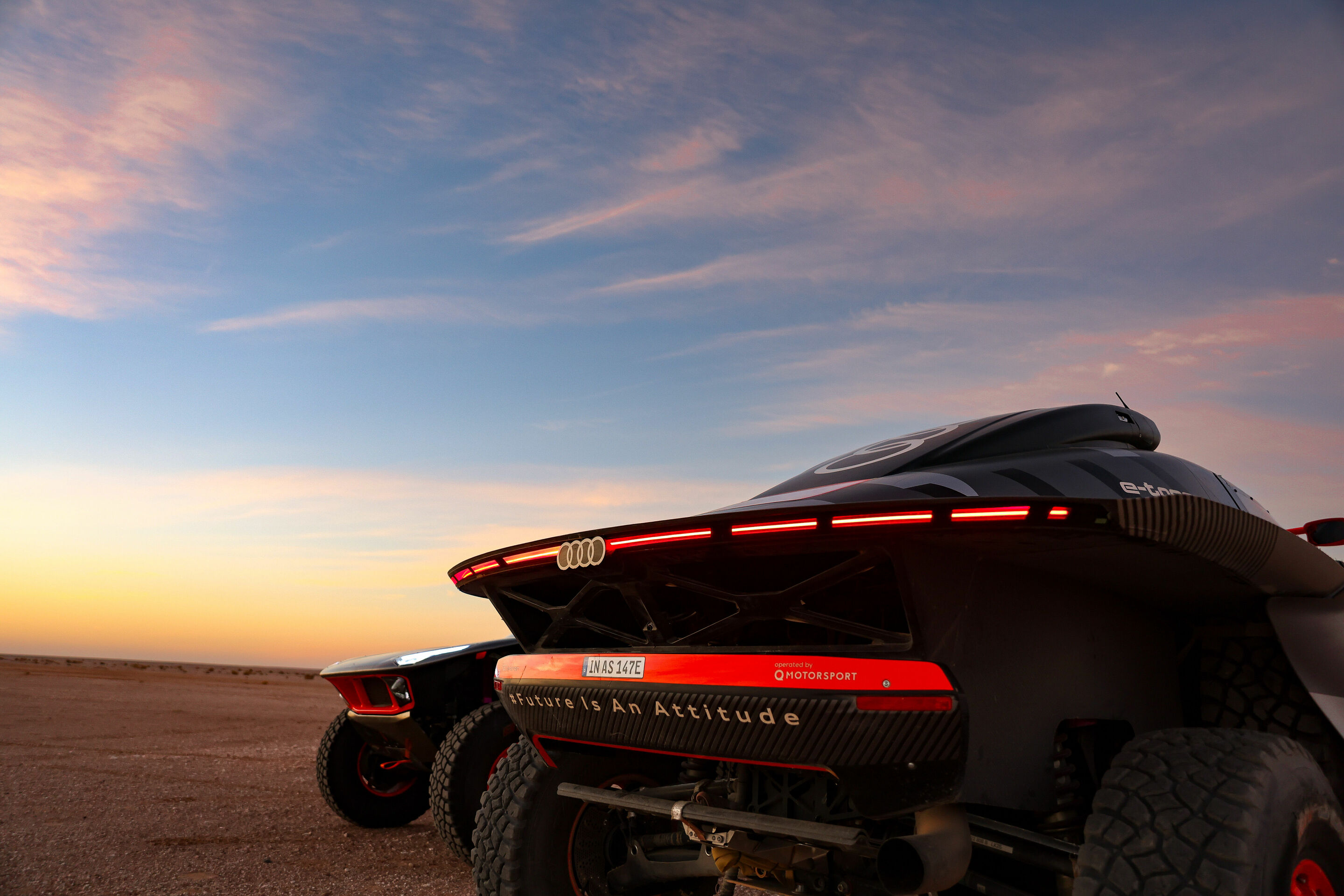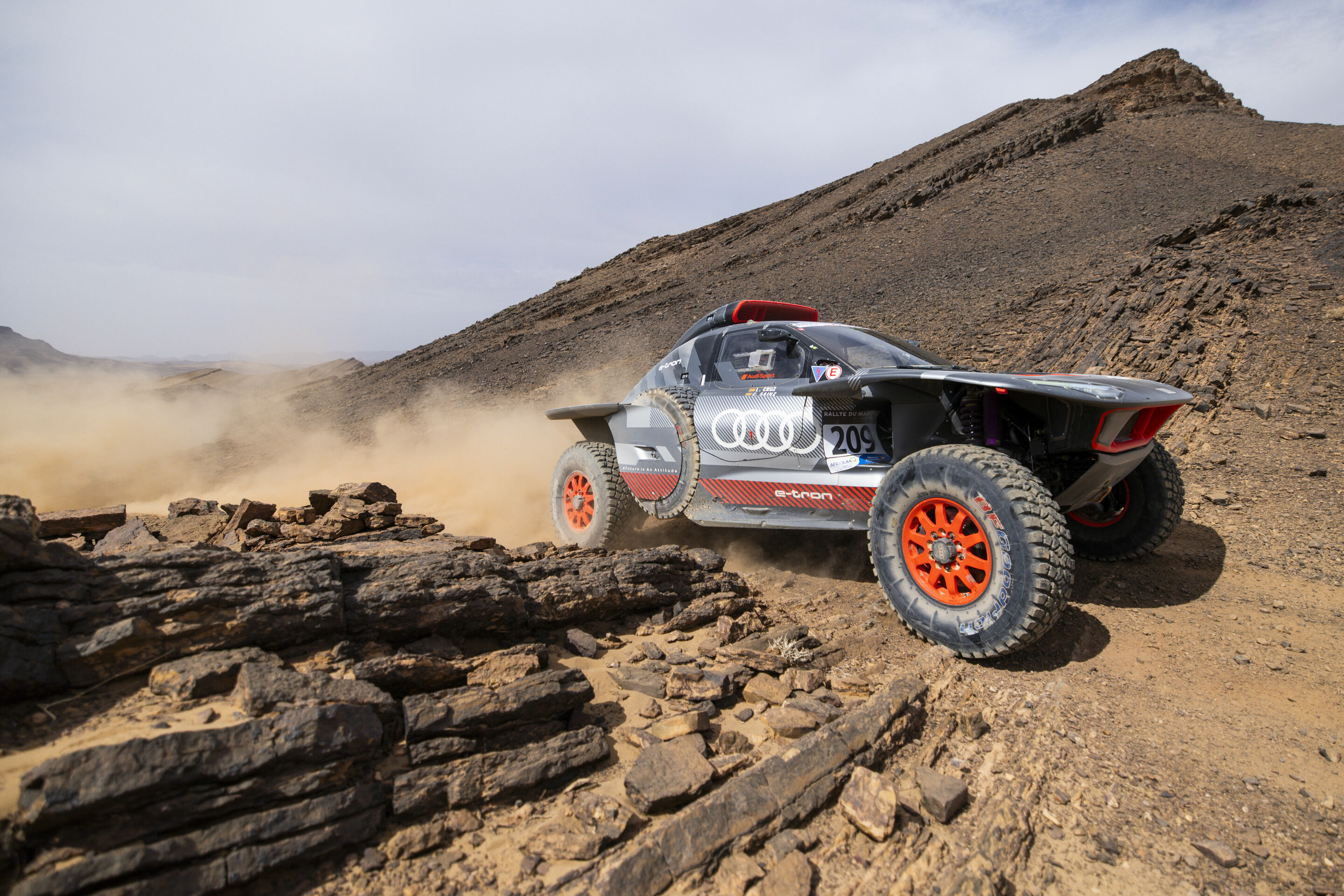The Audi RS Q e-tron: New details for the technological pioneer
Back to overviewAfter the initial concept idea in 2020 and the rally debut in January 2022, Audi presented the next evolutionary stage nine months later. It is now so mature that the engineering team was able to concentrate on improving details for the 2024 Dakar Rally.
Audi has regularly used its motorsport programs for pioneering technical achievements. From quattro all-wheel drive in rallying to the supercharged turbo engines in US racing, TFSI and TDI technology at Le Mans and electrified drive systems in LMP, Formula E and Dakar. “Racing has always been a technology laboratory for our brand,” says Head of Audi Motorsport Rolf Michl. “Now we have chosen the toughest conceivable test field for electric mobility. Our engineers have continued to refine the RS Q e-tron together with the drivers. With this concept, we want to show that electric drives are also the future in off-road rallying.”
As there is no charging infrastructure in the desert, the RS Q e-tron has an innovative charging concept: the highly efficient TFSI engine from the DTM is part of an energy converter. This allows the high-voltage battery to be charged while driving. The combustion engine runs in a particularly efficient speed range between 4,500 and 6,000 revolutions per minute. As a result, its specific consumption is well below 200 grams per kWh. Audi has been using reFuel to power the energy converter since the 2023 Dakar Rally. This residue-based product does not compete with food. It helps to reduce carbon dioxide emissions by more than 60 percent.
The axle drive of the Audi RS Q e-tron is purely electric. One motor-generator unit (MGU) drives the front axle and one drives the rear axle. A third MGU is part of the energy converter. However, the battery is not fed by the energy converter alone: energy is also recuperated during braking. The centrally mounted high-voltage battery system weighs around 370 kilograms and has a capacity of 52 kWh.
The regulations have set the maximum power output for the front and rear axles at 286 kW for the 2024 Dakar Rally. The electric motors can be controlled extremely precisely and allow the drivers excellent controllability, which is just as important in an off-road sport as it is in circuit races. The learning effects from the early days include refined electronic control to get as close as possible to the power limit.
The two gearboxes on the front and rear axle motor-generator units only have one forward gear. There is no mechanical connection between the drives of the front and rear wheels. Control is purely electronic. The software developed by Audi therefore enables free torque distribution between the axles.
Dr. Leonardo Pascali, the project’s Technical Director since 2023, has set new priorities for the 2024 Dakar Rally. In order to improve safety for the driver and co-driver in the event of hard landings or accidents, the engineers have focused on the chassis and cockpit. Optimized springs, dampers and bump stops in the chassis help to better distribute some of the loads over time. Improved foaming of the seats does the rest. A longer CFRP crash box at the front end of the chassis structure better absorbs the loads in the event of a hard frontal impact.
To improve reliability, the technicians reworked parts of the chassis. Time and again, penetrating stones got caught between the rim bed, brake disk and steering knuckle. This caused considerable damage. New fastening points for the wheel carrier now provide greater clearance so that the stones can be thrown out more easily. More robust rims and a new generation of tires from standard supplier BF Goodrich with more stable sidewalls also increase reliability.
To increase comfort for the driver and front passenger on the long and tiring stages, the engineers have improved the acoustic shielding of the cockpit. The front hood has also been redesigned. It better repels mud and water whirled up by the wheels. This keeps the windshield cleaner.
The performance of the prototype rounds off the catalog of modifications for 2024. Weight-optimized components bring the mass of the racing car even closer to the permitted minimum of 2,100 kilograms. The work with shock absorbers and springs led to an improved set-up. The set-up of the differentials also helped to enhance the handling in the desired direction. Creative ideas for practical use also make the mechanics’ work easier. This starts with modified screw connections and ranges from new locking solutions and filling devices to bolted instead of glued components.
